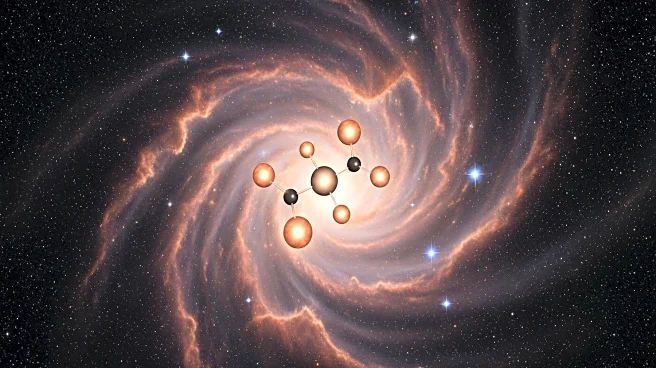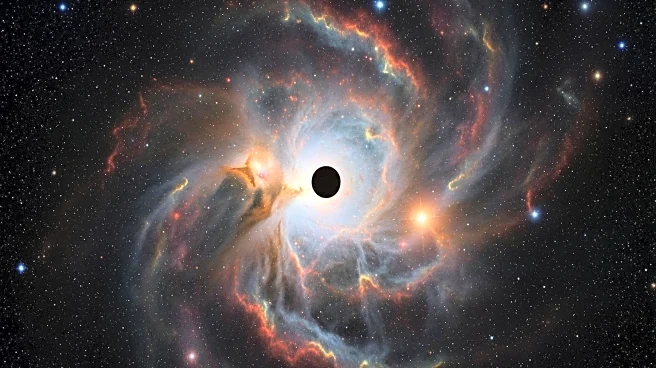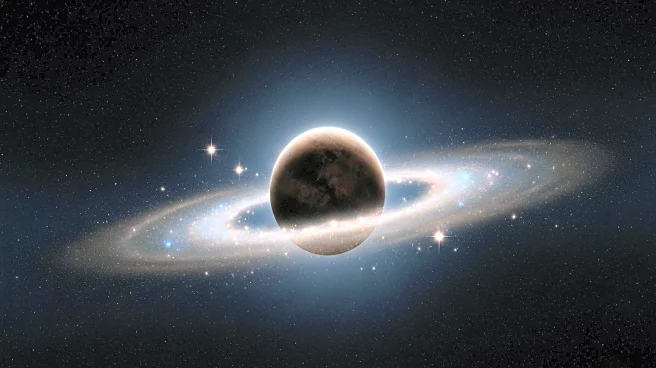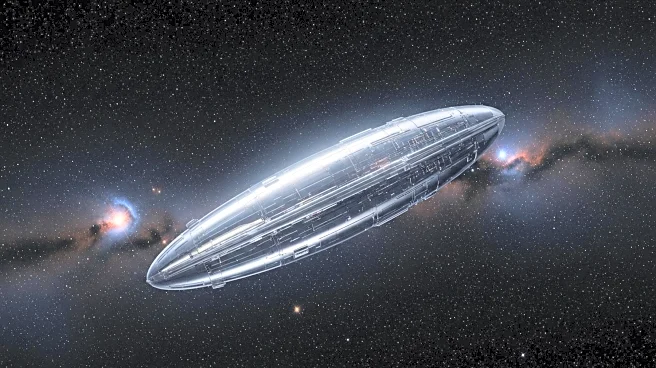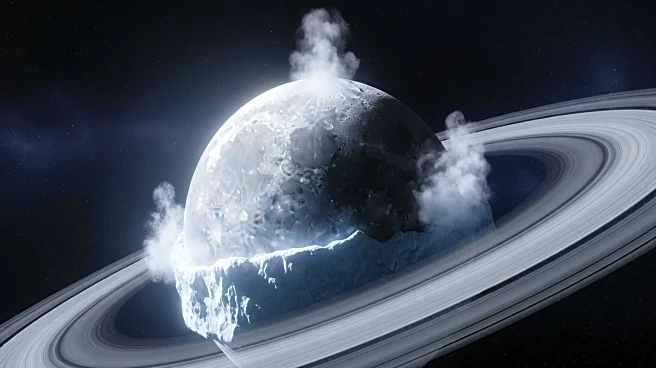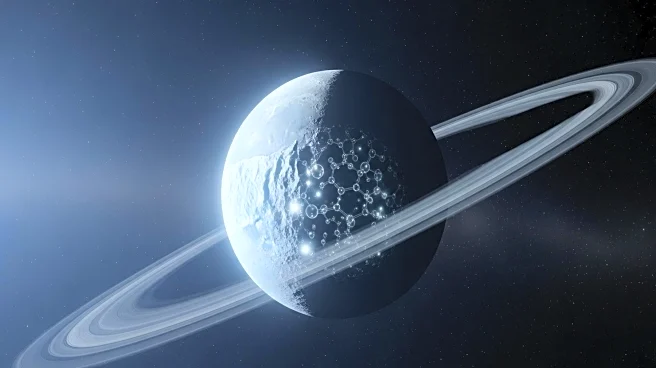What's Happening?
Astronomers have discovered a significant concentration of phosphine in the atmosphere of a brown dwarf named Wolf 1130C, located 54 light-years from Earth. This discovery was made using data from NASA's James Webb Space Telescope. Phosphine, a molecule composed of three hydrogen atoms and one phosphorus atom, is typically associated with microbial life on Earth. The concentration found was 100 parts per billion, which is notably higher than previous observations of other brown dwarfs. The research team, led by Eileen Gonzales from San Francisco State University, suggests that the presence of phosphine could be linked to a nearby white dwarf, Wolf 1130B, which may have generated phosphorus through accretion processes. This finding is surprising because phosphine is rare beyond Earth and has previously sparked debates about the possibility of life on other planets, such as Venus.
Why It's Important?
The detection of phosphine in the atmosphere of a brown dwarf is significant because it challenges existing theories about the chemical composition of such celestial bodies. On Earth, phosphine is a byproduct of organic decay, making it a potential biosignature for life. The presence of phosphine in Wolf 1130C raises questions about the processes that could produce such molecules in environments where life is not expected. This discovery could have implications for the search for extraterrestrial life, as it suggests that phosphine might be more common in the universe than previously thought. Understanding phosphine chemistry in non-habitable environments is crucial for interpreting its presence on other planets and could refine the criteria used to search for life beyond Earth.
What's Next?
Further research is needed to understand the mechanisms behind the production of phosphine in brown dwarfs like Wolf 1130C. Scientists will likely conduct additional observations and simulations to explore the role of nearby white dwarfs in generating phosphine. This research could lead to a better understanding of the chemical processes in brown dwarfs and refine the search for biosignatures in exoplanetary atmospheres. The findings may also prompt a reevaluation of the conditions under which phosphine can form, potentially expanding the scope of astrobiological studies.
Beyond the Headlines
The discovery of phosphine in a brown dwarf's atmosphere highlights the complexity of chemical interactions in space and the potential for unexpected findings in the search for life. It underscores the importance of interdisciplinary research, combining astrophysics, chemistry, and biology, to unravel the mysteries of the universe. This finding may also influence the development of new technologies and methodologies for detecting biosignatures in distant worlds, ultimately contributing to our understanding of life's potential beyond Earth.

